Body Weapons
Locks, Punches, Kicks
The martial art of taijutsu is a fighting method that does not only consist of punches, throws, or holds. The whole body is used as a defensive weapon. The Japanese word ken is a term for all-natural weapons. Just as combat stances are constantly adapting to circumstances, natural weapons are constantly adapting to the situation. Gripping hands become fists, and maybe claw hands again. And kicking feet might turn into knee kicks. The hip and shoulder are used for leverage and ramming.
Another distinctive feature of Ninjutsu is that it uses the dynamics of natural weapons. It doesn’t just use pure muscle power to deliver a powerful punch, but a combination of body energy, body balance, and breath control to produce a terrifying, knock-down effect. This natural power, combined with speed and scientific knowledge of the human body’s weak points, becomes a deadly and effective weapon.
Kikaku ken – Demon Horn
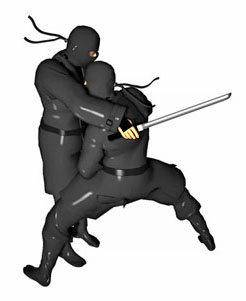
The bony structure of the head – especially the forehead – is used to slam, jab, ram, or stretch the enemy’s joints. When grabbed from behind, you can inflict excruciating pain on the back of your enemy’s head by slamming your head back into their face. The head can also be rammed against the breastbone or chin.
Shuki ken – Elbow
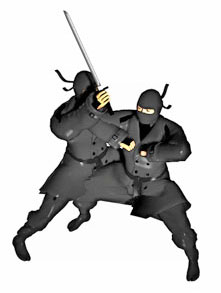
The bone structure of the elbow can be used against the bones of the arms, torso, head and it can press on sensitive points on the body. With the swing of the whole body, the elbow becomes a formidable weapon even in close combat.
Sokki ken – Knees

The knee is used similarly to the elbow against the limbs, torso, and head. The knee also reaches places on the enemy’s body that are difficult to reach for punches or kicks.
Shitō ken – Finger Sword
Also Hisoken (Hidden Spear)
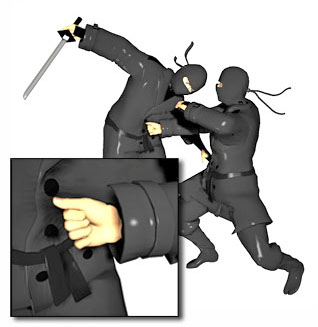
The tip of the thumb is used to stab semi-soft targets on the enemy’s body and apply pressure to sensitive points. Especially zones where muscles covering the bones like the arms, ribs, and neck are attacked with the thumb.
Shishin ken – Finger Needle
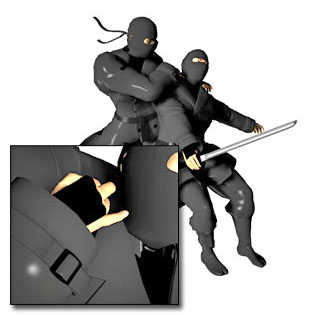
The Fingerpin is used at short range against soft or semi-soft targets such as the face, neck, solar plexus, or forearm.
Shitan ken – Finger Ends

The fingers are used as hooks to tear, grab or crush the enemy’s sensitive zones. The fingertips support the pressure and the fingernails increase the pain. This weapon works well against the neck, hand, or eyes and mouth.
It is still available in different variations (san shitan ken, with three fingers) or supported by the thumb (shi shitan ken, san shitan ken).
Kiten ken – Create a Turn
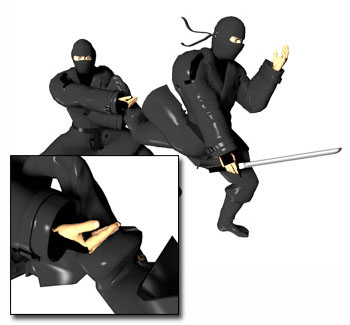
The edge of the open hand can be used against bones of the arms, legs, neck, and head. The punch is set at a 90° angle in the hand and opened just before the target. The whole body is placed behind the punch and only touches the target a short fraction, but that should be enough to knock him off his feet.
Gyokakuken – Horns United
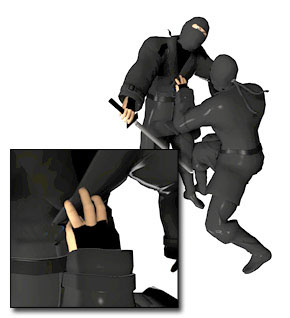
Index finger, middle finger, and ring finger are shaped like a trident. The tips of the fingers can be used to stab soft parts of the body, such as the neck.
Shu ken – Beak

All fingers are centered on one point, giving the hand the shape of a beak. With the concentrated power of all fingers in a relatively small area, this punch is particularly useful on muscles and pressure points.
Shikan ken – Finger Ring
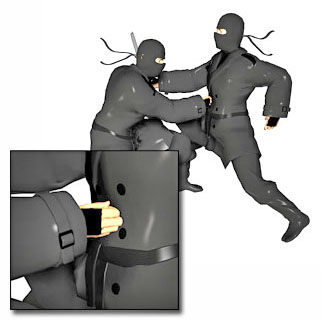
The knuckles are used against the large areas of the bones, e.g. the lower ribs, sternum, and face. The fingers are folded in half and the knuckles of the middle fingers are used as a weapon. The whole body is placed behind the punch and the knuckles shoot straight to the target.
There are variations of this fist, whereby two, three, four knuckles can also be used.
Koppō ken – Bone
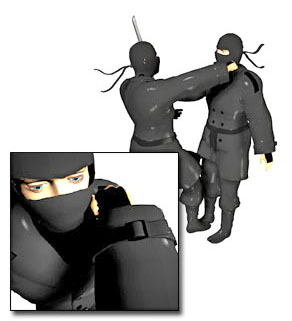
The fist is held as in fudō ken, only the thumb is at the side and the knuckle of the thumb hits the target.
Shako ken – Crab

The fingers are spread and bent so that the hand forms a claw. This weapon is used against the soft parts of the body. The palm is used for ramming or breaking, and the fingers for raking. The face, neck, abdomen, groin, muscles of the upper body, and inner thighs are effective targets for this weapon.
Happa ken – Eight-Leaf
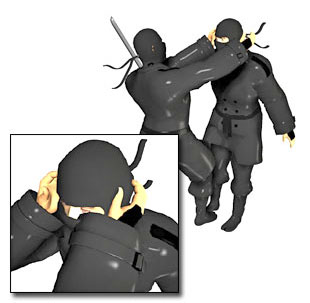
This fist is the palm of the open fist. You can hit both ears at the same time with the palm of your hand, tearing the eardrum.
Fudō ken – Immobile
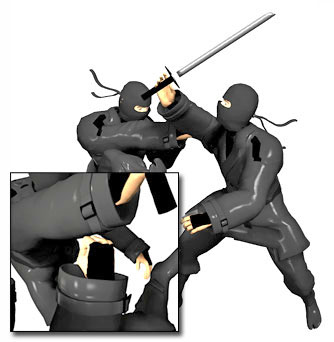
The normal fist is pounded against bone. She can hit with different zones: the front, the bottom, the outside, etc. This can break the bones and knock the opponent down.
Soku yaku ken – Dancing Foot
The bottom of the heel and the sole of the foot are used to kick into the enemy’s semi-soft or hard zones. The step can be used against the knee, where he is then kicked down from above, or against higher areas. The kick is not kicked and quickly withdrawn, but kicked_through the enemy.
Zenpō geri – Forward Kick
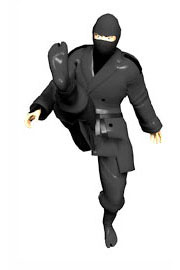
Straight kick forward. Can be kicked at different heights. The heel or bottom of the foot hits the target.
Sokuyaku suiteiken – Horizontal Kick
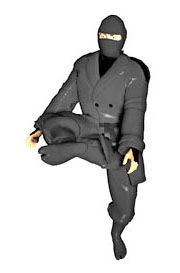
The leg is kicked forward horizontally, the foot hits the target sideways.
Sokuhogeri – Side Kick
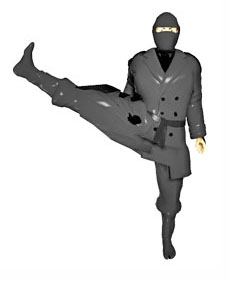
The leg is kicked out sideways, the upper body remains facing forward.
Kō ken – Hook
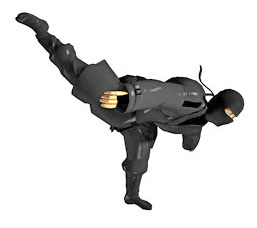
The leg is kicked backward in a hook-like manner, e.g. tripping an opponent.
Kōhōkeri – Back Kick
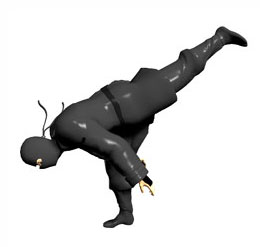
The leg is kicked out backward with the upper body lowered.
Kagi kōhō keri – Back Hook Kick
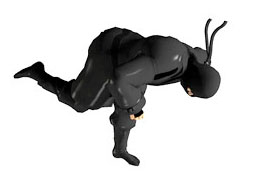
You step backward and hit with the sole of your foot. Can be used when freeing from a hold.
Kata ashi tobi keri – One-Legged Jump Kick

Jump off with one leg and direct your body and arms in the direction of the jump.
Ryo ashi tobi keri – Two-Legged Jump Kick
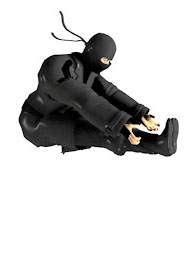
Jump off with both legs and keep them together during the jump. The jump is very difficult but also very effective because the whole body hits the opponent.
Ryo yoku keri – Two-Legged Wing Kick
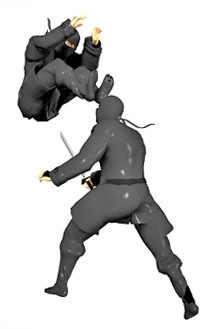
This kick is most commonly used when leaping down on the enemy from a high vantage point.
Soku gyaku ken – Inverted Foot
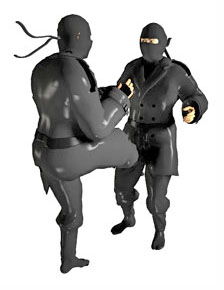
The tips of the toes are used to kick against soft or semi-soft targets on the body. Against the abdomen, neck, and the muscles of the arms and legs. The kick is thrown against the target with momentum, toes tightly together to support each other.
Omote soku gyaku ken no keri
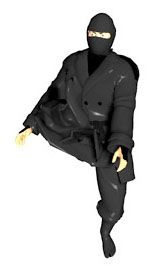
In omote soku gyaku ken no keri, the sole of the foot is turned inward and meets the opponent when centered in front of the body.
Shizen ken – Natural Body Weapons
The techniques shown above are only a part of the techniques available, shizen ken (natural body weapons) and taiken (full body weapons) offer countless variations of each body part. Shoulders, backs of wrists, fingernails, teeth, bodyweight, whatever you can think of is used as a weapon.